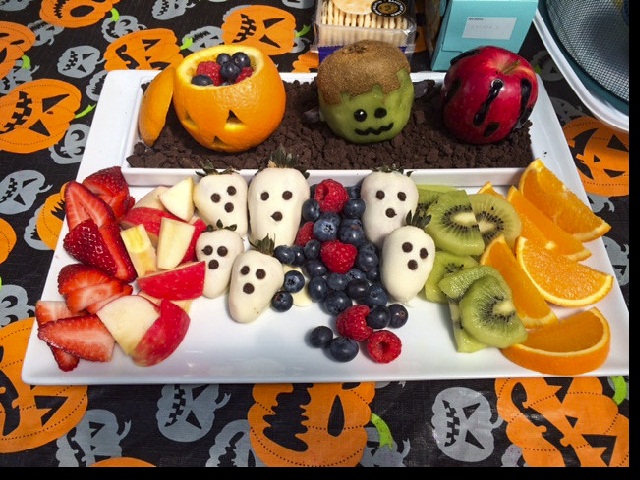on Monday, October 31, 2022 Halloween
4 Traditions of Halloween
Trick-or-treating
Trick-or-treating Halloween is a tradition that has become an important part of North American culture. Over the years, it has evolved into a sophisticated adult celebration and a night of mischief. halloween costumes dubai Earlier, the holiday was associated with minor mischief, drinking, and vandalism. In the early twentieth century, governments, churches, and other organizations tried to curb this behavior.

Trick-or-treating first originated in Ireland. The tradition of trick-or-treating spread to the US, but was negatively affected during World War II, when rationed sugar made it difficult to buy sweet treats. Luckily, trick-or-treating made a comeback after the war. Nowadays, it is impossible to imagine Halloween without trick-or-treating.
Trick-or-treating was originally a religious holiday, but it has been modernized to incorporate a secular purpose. Today, trick-or-treating is a fun way for kids to meet. In some places, children go trick-or-treating in costume, asking for candy from neighbors.
Bobbing for apples is a tradition similar to trick-or-treating in the modern era. However, in the past, people used to pick up apples with their teeth. The ancient practice was believed to have a predictive significance. Christianity also had a huge influence on Halloween, and it coincided with Christian celebrations of the dead. In Ireland, All Saints’ Day and All Souls’ Day are also held in October and commemorate the souls of the deceased.
Today, trick-or-treating has evolved into a more modern tradition, based on elements of the Celtic festival of All Hallows’ Day, also known as Bonfire Night. In the early 1600s, children in Britain wore masks and carried effigies while trick-or-treating. The tradition spread to the United States, and many neighborhoods started organizing events for children. In the mid-19th century, the popularity of Halloween was greatly boosted by the arrival of Irish and British immigrants.
The tradition of trick-or-treating has deep roots in history. It has evolved from a pre-Christian Celtic festival known as Samhain. This day was believed to be the day when ghosts returned to earth. As a result, people dressed up in animal skins and held parties for children, involving fortune-telling, mock haunted houses, and games like bobbing for apples. Today, it is celebrated in many communities across the world.
Dune Buggy 30% off on Halloween
Bobbing for apples
Bobbing for apples has been associated with Halloween for years. Its origins can be traced back to the Celtic festival of Samhain, which is celebrated from October 31 to November 1. This holiday marks the end of the summer and the beginning of the fall harvest. While this tradition has changed throughout the years, it remains a traditional way to celebrate the holiday.
The game is played in a tub. Using a large cooler or bucket, fill the tub about halfway with cold water. Then, put in a dozen apples, enough to fill the tub almost completely. The game should last for about two minutes. In that time, each player gets a turn to bite an apple.
Bobbing for apples has a rich history. The ancient Romans brought the tradition to Britain. It was associated with Pomona, the goddess of fruit, and was thought to bring good luck and good fortune to the people. It was also a ritual for young unmarried people who wanted to find a wife. Those who managed to do so would be granted marriages and get the sweet taste of apples.
Bobbing for apples has been around for centuries. It has roots in courting rituals, but today, it is a common game for Halloween parties. While it is a fun game to play with children, remember to follow a few safety precautions. Bobbing for apples can be messy and may lead to injury, so it’s best to play it safely.
Bobbing for apples is a fun Halloween tradition. The participants place apples in a tub or large tub of water, and then attempt to catch them with their teeth. Apple bobbing is believed to date back to the ancient Roman invasion of Britain, and may have originated from the worship of Pomona, the goddess of fruit and harvest, which was celebrated on 1 November. Later, the Celts incorporated it into a ritual and a form of divination.
Bobbing for apples is one of the 5 traditional Halloween games that has survived from hundreds of years. According to Watchman Fellowship, this ancient ritual was practiced by the Celts to predict the future. The Celts believed that bobbing for apples meant a man would marry if he or she succeeded on the first attempt. It was believed that if the bobber had failed three times, it would be doomed for romance.
Dressing up as a ghost
One of the most popular traditions of Halloween is dressing up as a ghost. The tradition began centuries ago in the Celtic culture when people believed the dead would come back as spirits on the eve of Samhain. Families would leave food and drinks on their doorsteps for these spirits, and they would also dress up in spooky costumes to ward off the ghosts. Throughout the years, this tradition has evolved to include non-ghost costumes as well.
In Ireland, this tradition is also known as Mischief Night, or Devil’s Night. Although the origins of the tradition are murky, some believe that it came from the Celtic festival celebrated on 31 October-1 November. This festival was known as Samhain in Ireland, and Calan Gaeaf in Wales and Cornwall. It is thought to have been pre-Christian in origin, although Christianization of the country later merged it with Celtic practices.
Another tradition is trick-or-treating. Kids dress up as their favorite characters for the night and ask neighbors for candy. This tradition is as popular with kids as it is with adults. Most children enjoy dressing up as ghosts, witches, and goblins.
Some of the first Halloween traditions date back to the Celtic people. Many people would leave food out outside of their homes in an effort to fend off evil spirits. This tradition has continued to this day. Some people would dress up as witches or ghosts in order to frighten people.
Halloween evolved from the ancient Celtic festival of Samhain. This festival was celebrated in Ireland, the United Kingdom, and Bretagne. It was an important time of year for the Celts, and they would wear costumes to keep the ghosts at bay.
Irish people also celebrate Halloween, which is known as Samhain Night. In northern European pagan traditions, Samhain Night was a time for communal fire festivals. During this time, large bonfires were lit to ward off evil spirits. Even after the arrival of Christianity in the sixth century, Irish people continued the old pagan rituals.
Carving pumpkins
Carving pumpkins is a Halloween tradition that is native to North America. The practice of carving pumpkins dates back to the Celts, who carved faces and candles into turnips and placed them in windows to ward off evil spirits. The custom was later adapted to the United States, where it became synonymous with the holiday. Today, the most popular carving pumpkin is the Howden, which has a thick stem, shallow ribs, and thin flesh.
Originally, the holiday commemorated the end of summer, known as Samhain. People in Ireland and Britain celebrated this event with the belief that the souls of the dead would wander the earth. The idea was to scare away evil spirits with masks and costumes. Carving pumpkins was also a tradition of those who celebrated Samhain.
Irish and Scottish immigrants to the U.S. brought the tradition with them, using larger pumpkins that were easier to carve. The Irish, for instance, had a story about Stingy Jack, a drunken jack who tricked the devil and bought his last drink, which then spawned a monster that wandered the earth. It is thought that the Irish legend inspired the practice of carving pumpkins, which also has religious significance.
The tradition of carving pumpkins has roots in ancient Celtic Samhain, a pagan festival that was associated with wearing costumes and lighting bonfires. This tradition later spread from Ireland to England and France, and later to the United States. As Halloween evolved, it became associated with scares, candy, and carved pumpkins.
The tradition of carving pumpkins is centuries old and has a rich history. It originates from the Celtic harvest festival Samhain, which marks the end of the harvest season and the beginning of winter. The Irish used to wear masks to ward off evil spirits and welcomed home with bonfires made from animal bones. Today, the tradition of carving pumpkins is celebrated in more than 200 countries.
Halloween has a long and colorful history, and its origins can be traced to ancient pagan rituals, creepy folktales, and natural phenomena. The first Halloween celebrations were celebrated in Ireland around 2000 years ago and quickly spread to other countries. During the early days, American colonists in New England were forbidden to celebrate the holiday. However, the South quickly caught on to the tradition. In the eighth century CE, Gregory III moved the festival from Samhain eve to November 1. This became known as All Hallows Eve and the celebration became Halloween.


